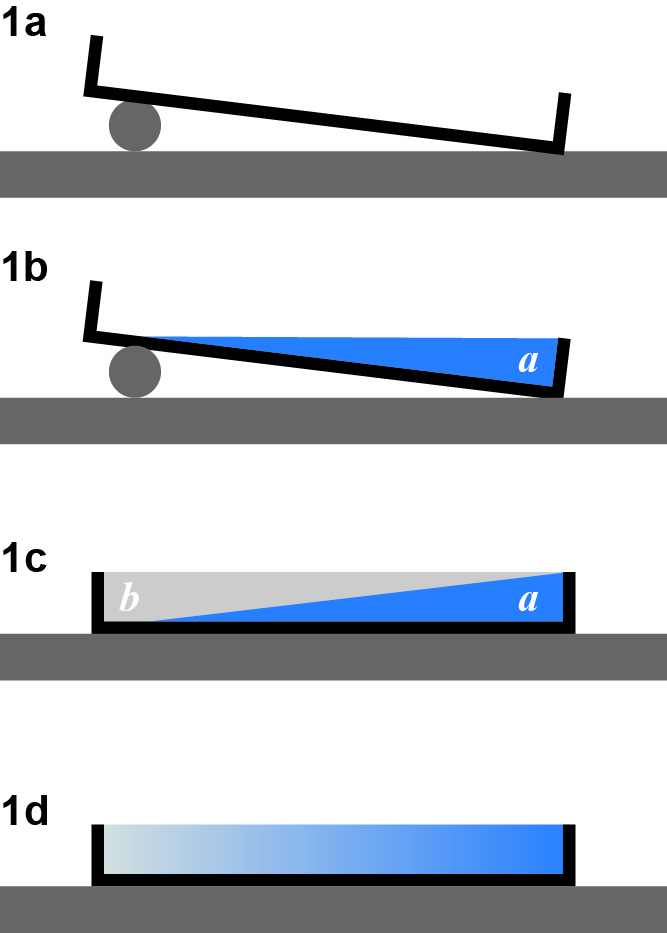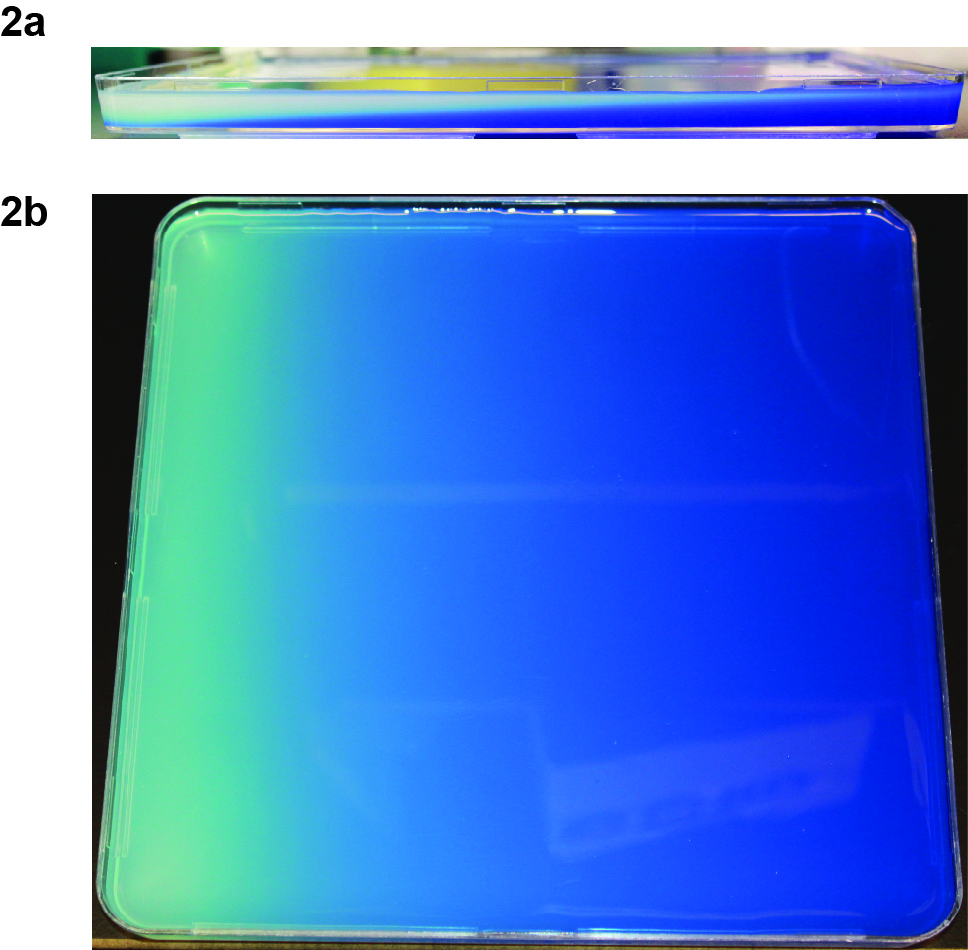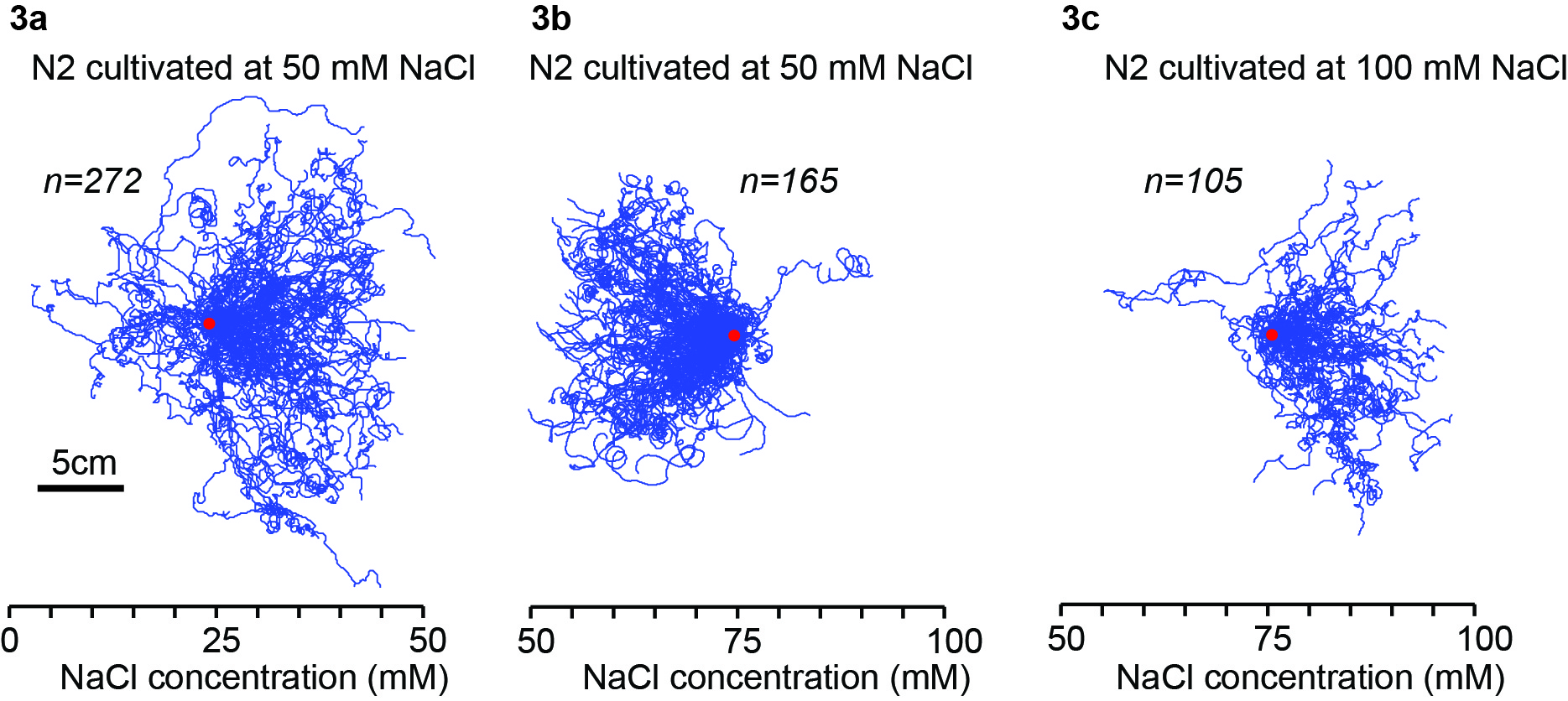- Elevate one side of a square Petri plate as shown, such that the bottom of one side is level with the top of the opposite side (Fig. 1a).
- Fill with melted agar with a chemical concentration a, and wait until it hardens, creating a triangular wedge of agar (Fig. 1b).
- Lay the plate flat. Now fill with melted agar with a chemical concentration b, and wait until it hardens. Agar hardens at a lower temperature (<30°C) than it melts (>60°C), so the first triangular wedge is not disrupted as the second wedge is poured (Fig. 1c).
Diffusion will first equilibrate the soluble chemical in the vertical direction (Fig. 1d). The diffusion equation, x2 = 2Dt, tells us how long we need to wait. Using the diffusion coefficient for a small molecule in water (D = 10-5 cm2 s-1), one estimates that the molecules diffuse ~1 cm in ~12 hr. So, after ~1 day, the surface of the agar plate will have a linearly varying concentration of chemoattractant, a on one side, b on the other. The diffusion equation also tells us when the gradient disappears in the horizontal direction (after ~40 days with 9 cm plates).
A tiny amount of methylene blue in one of the agar solutions helps to visualize the gradient. Fig. 2a shows a photograph of the edge of a 24 cm x 24 cm agar plate shortly after the second wedge was poured. Fig 2b is a photograph of the surface of the same plate taken the following day.
We have used this linear gradient assay to study chemotaxis towards NaCl. We use a high-resolution tracking system to follow the movements of individual worms navigating linear gradients on 24 cm x 24 cm square agar plates. Each panel of Fig. 3 shows each track of individual wild-type worms navigating linear NaCl gradients spanning 0 to 50 mM (Fig. 3a) or 50 to 100 mM (Fig. 3b, c). For presentation purposes, all tracks in each experiment are depicted as starting from a common point (red circles in each panel). Worms grown on standard NGM plates (50 mM NaCl) will crawl towards 50 mM NaCl whether initially placed at 25 mM NaCl (Fig. 3a) or at 75 mM NaCl (Fig. 3b). On the other hand, worms grown on high salt NGM plates (100 mM NaCl) will crawl towards 100 mM NaCl (Fig. 3c). Thus, worms develop a preference for the salt concentration that corresponds to their cultivation conditions, and are capable of either moving up gradients or down gradients in pursuit of their preferred salt concentration.
For us, the linear gradient assay has opened new doors in the study of the different navigational modes in NaCl chemotaxis (positive chemotaxis up gradients, negative chemotaxis down gradients) as well as experience-dependent plasticity. As any soluble chemical can be used, the method should facilitate numerous studies in C. elegans chemotaxis.
References
Iino Y and Yoshida K. (2009). Parallel use of two behavioral mechanisms for chemotaxis in Caenorhabditis elegans. J. Neurosci. 29, 5370-80. 
Pierce-Shimomura JT, Morse TM, and Lockery SR. (1999). The fundamental role of pirouettes in Caenorhabditis elegans chemotaxis. J. Neurosci. 19, 9557-69. 
Ryu WS and Samuel ADT. (2002). Thermotaxis in Caenorhabditis elegans analyzed by measuring responses to defined thermal stimuli. J. Neurosci. 22, 5727-33. 
Articles submitted to the Worm Breeder's Gazette should not be cited in bibliographies. Material contained here should be treated as personal communication and cited as such only with the consent of the author.



Leave a Reply
You must be logged in to post a comment.